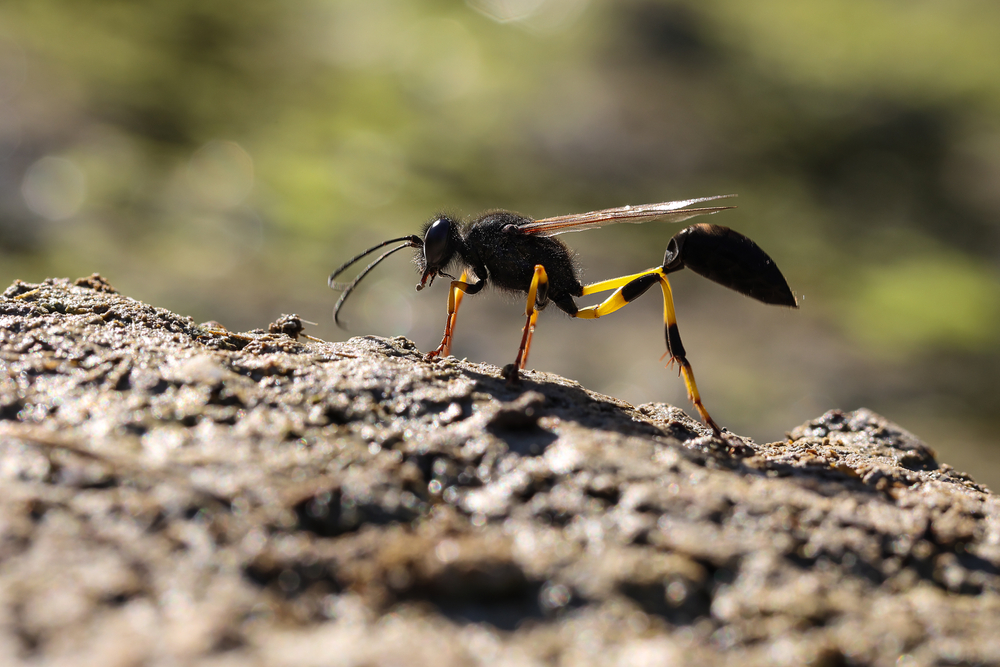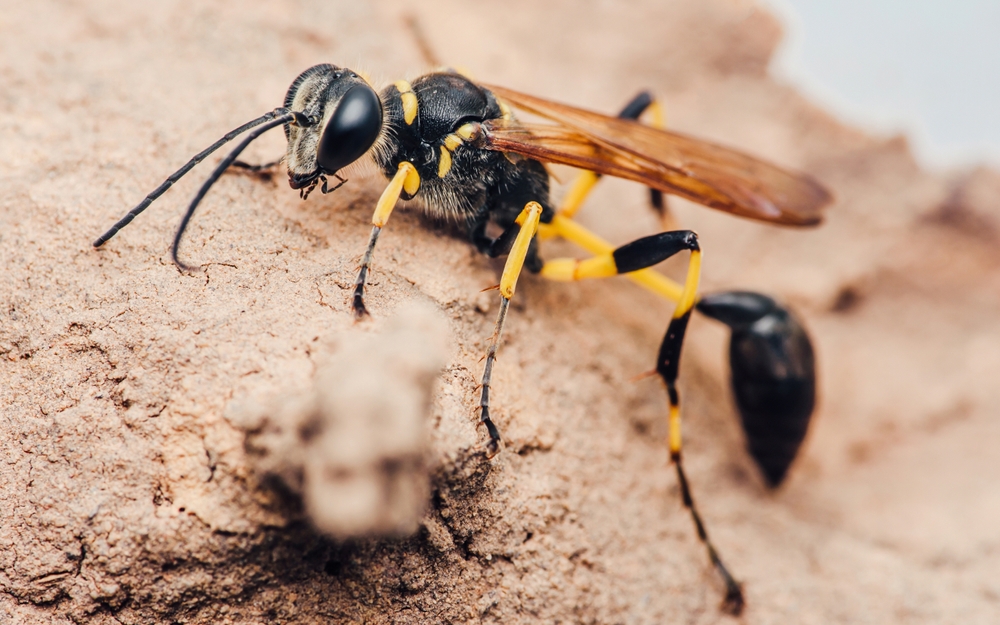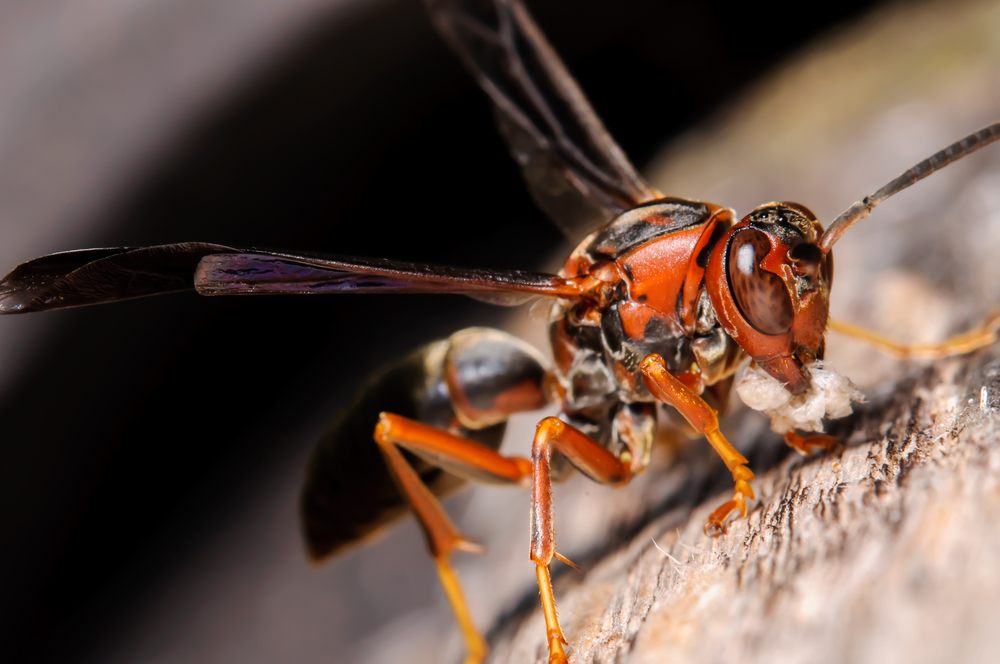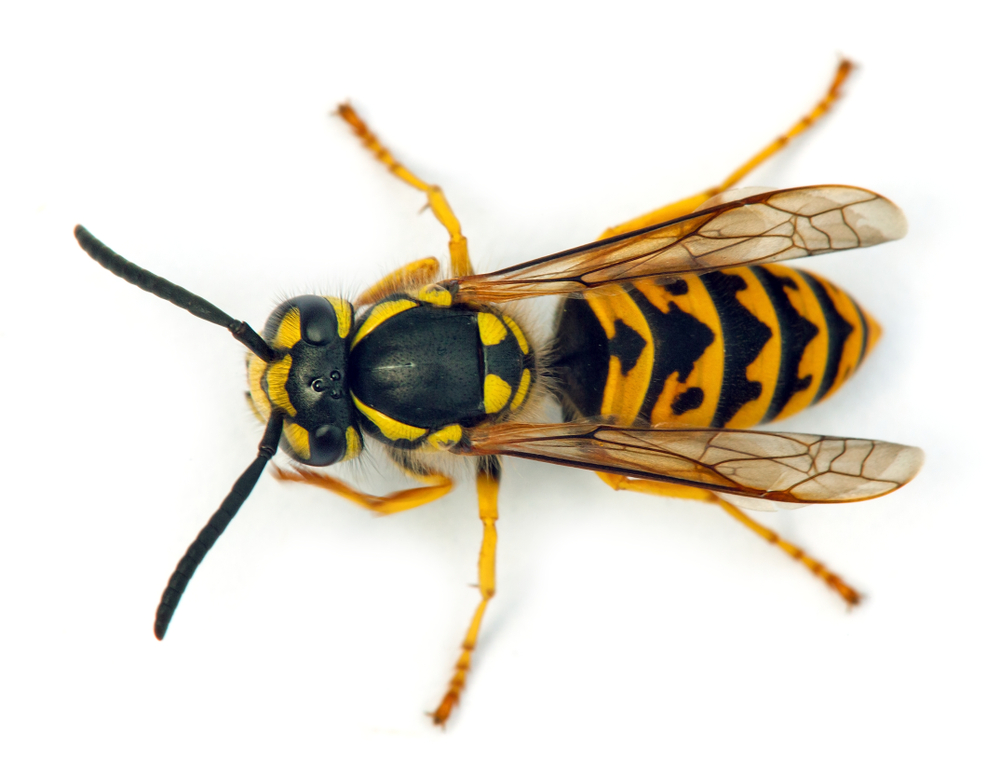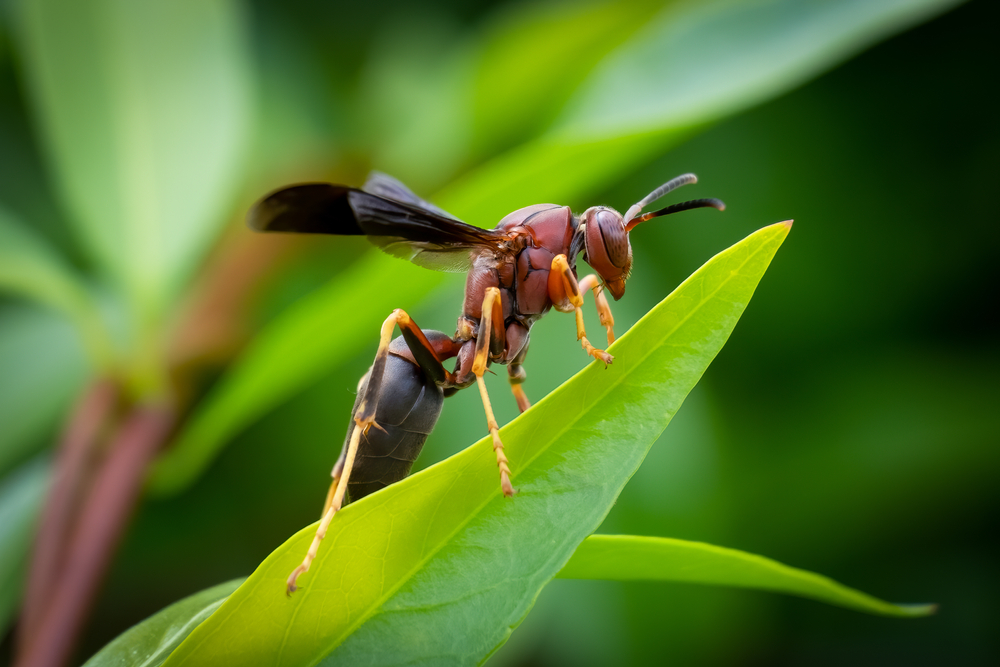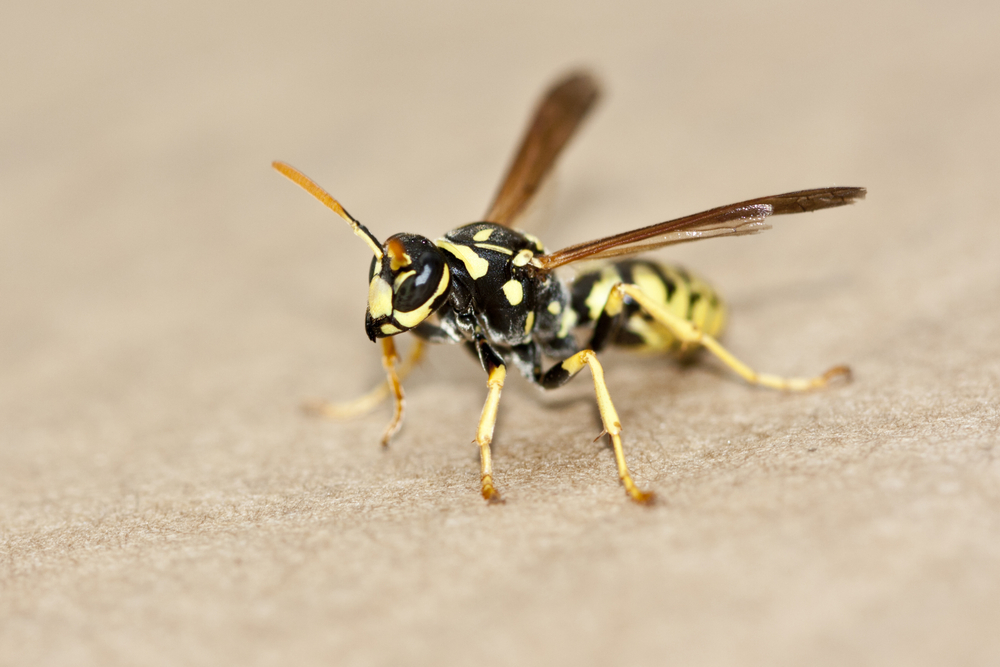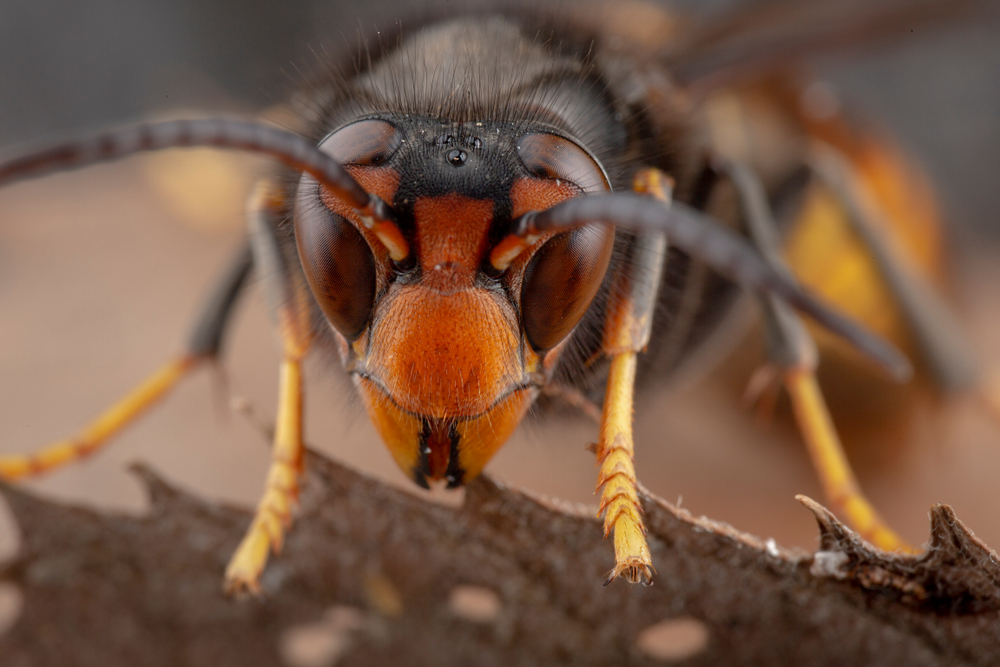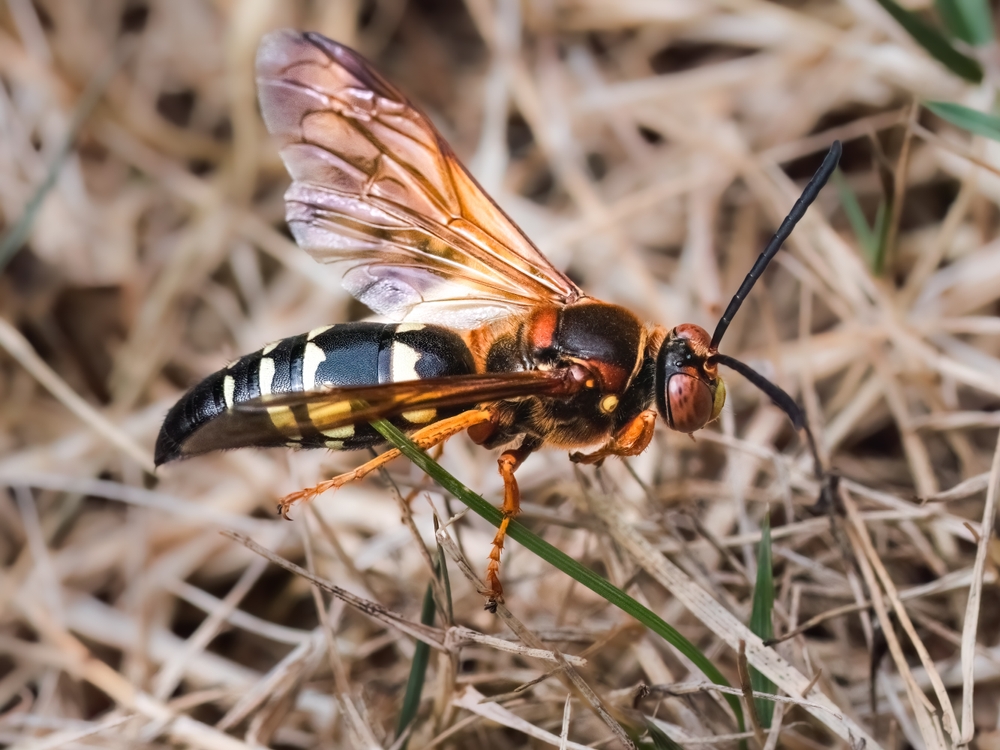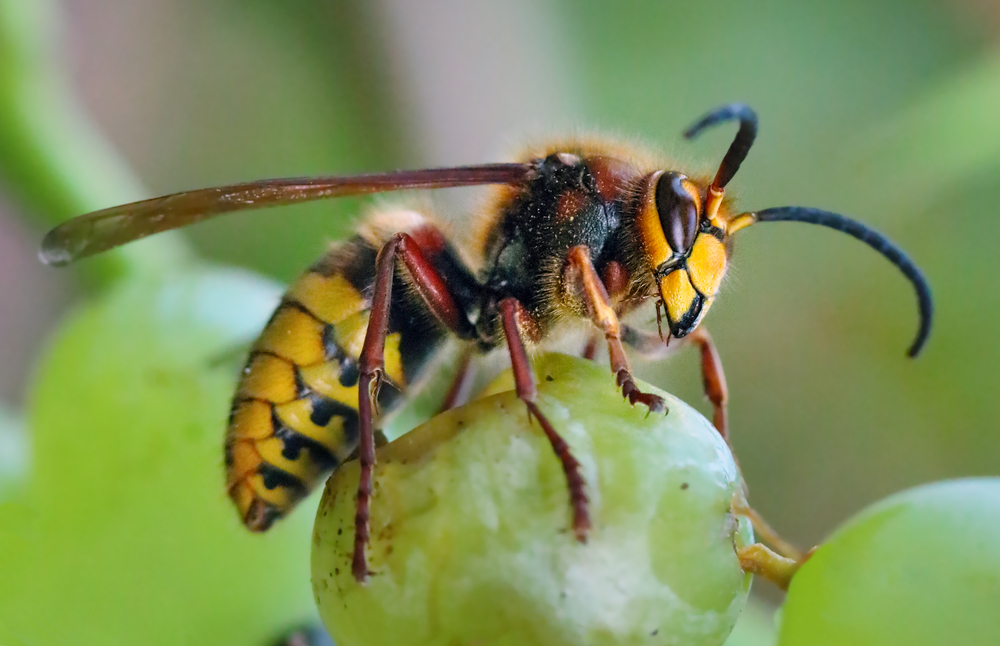About
#Insect
Mud daubers are solitary wasps known for their slender bodies, thread-like waists, and remarkable mud nests. Found worldwide, including throughout North America, South America, Europe, and Asia, these wasps are non-aggressive and highly beneficial, as they help control spider populations. Unlike social wasps, mud daubers do not live in colonies and rarely sting humans.
Adults typically range from 15–30 mm (0.6–1.2 inches) in length. Their appearance varies by species but often includes shiny black or metallic blue bodies, sometimes with yellow markings and long legs. One of the most common species is the black and yellow mud dauber (Sceliphron caementarium), while others, like the blue mud dauber (Chalybion californicum), have a sleek, iridescent blue-black sheen.
Mud daubers are solitary nest builders, constructing distinctive nests from mud, typically in protected areas like eaves, sheds, or under bridges. The female collects mud to create tubular or pot-like chambers. Inside each chamber, she places paralyzed spiders—often orb-weavers—as food for her developing larvae, then lays a single egg and seals the cell.
The larva feeds on the immobilized spiders, pupates within the chamber, and emerges as an adult weeks or months later, depending on environmental conditions.
Mud daubers are nectar feeders, using flowers for energy while hunting spiders for their young. They are non-aggressiveand rarely sting unless physically threatened.
Because of their beneficial role and low threat to humans, mud daubers are typically tolerated or even welcomed in gardens and near homes.
Mud daubers span multiple genera, including Sceliphron, Chalybion, and Trypoxylon, and are classified within the families Sphecidae and Crabronidae.
Threatened:
Extinct
Critically Endangered
Endangered
Vulnerable
Near Threatened
Least Concern



































































